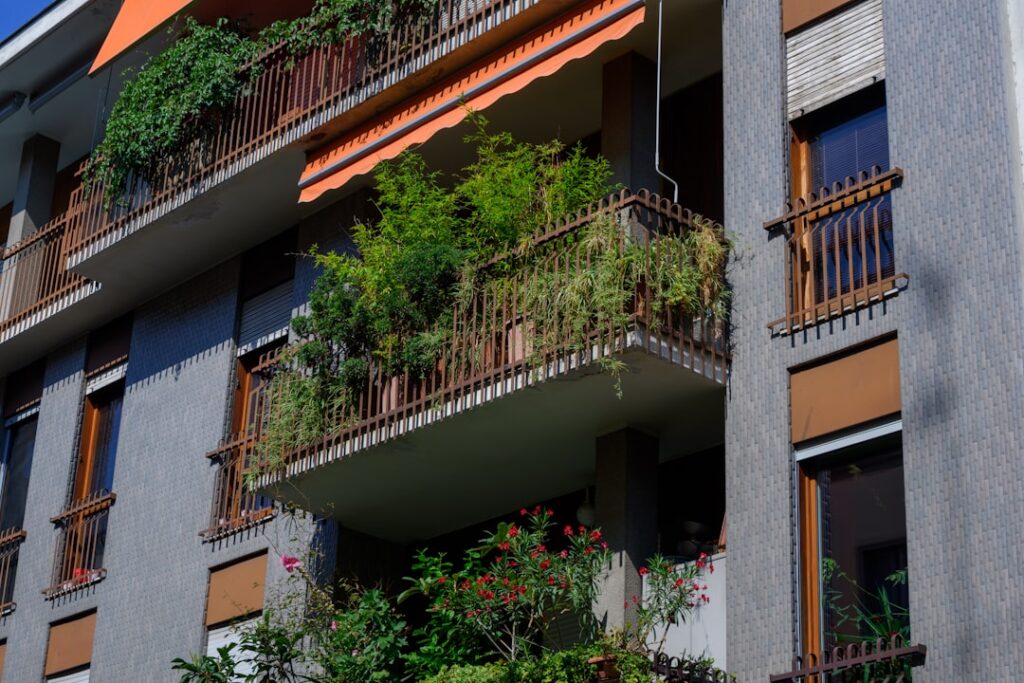Let’s be real: that small slab of concrete attached to your apartment is probably more of a graveyard for forgotten folding chairs than a sanctuary of calm. But what if we told you that this tiny space holds the key to your own private, green escape? It’s time to trade the concrete blues for garden greens.
Creating a thriving container garden isn’t about having a mythical green thumb; it’s about having a solid plan. Consider this your definitive, no-fluff checklist to transform that balcony from a barren wasteland into a bona fide zen den.
☐ Step 1: The Pre-Flight Check (Assess Your Domain)
Before you buy a single pot, you need to play detective. Understanding your balcony’s unique personality is the most crucial step.
- Become a Sun Stalker: This is the big one. For a few days, track how much direct sunlight your balcony gets. Is it a sun-drenched stage from dawn till dusk (6+ hours)? That’s “full sun.” Does it only get a few hours in the morning or afternoon? That’s “part-sun” or “part-shade.” Is it perpetually shaded by the building next door? That’s “full shade,” and don’t worry, we have plants for that, too.
- Check the Weight Limit: This is the boring but “let’s-not-get-evicted” part. Large pots filled with wet soil and plants are surprisingly heavy. Check your lease agreement or with your building manager about weight restrictions. The goal is a zen garden, not a structural engineering incident.
- Wind & Water Audit: Is your balcony a wind tunnel? If so, you’ll need sturdier plants and heavier pots. Also, how will you water your new plant babies? A long-spout watering can is your best friend; lugging buckets of water through your living room is not very zen.
☐ Step 2: Choose Your Container Crew
Your pots are more than just plant holders; they’re the foundation of your garden’s style and health.
- Terracotta: Classic, breathable, and gorgeous. The downside? They dry out lightning-fast in the sun and can crack in a hard freeze.
- Glazed Ceramic: The stylish, heavy-duty cousin of terracotta. They hold moisture better but can be pricey and weighty.
- Plastic/Resin: Lightweight, affordable, and excellent at retaining water. The aesthetic has come a long way from the cheap-looking pots of yesteryear.
- Fabric Grow Bags: Not the prettiest, but arguably the best for root health. They prevent roots from circling and provide amazing aeration.
- The Golden Rule: Whatever you choose, it must have drainage holes. No exceptions. Your plants want to drink, not drown. They’re not training for bog snorkeling.
☐ Step 3: Get Your Hands Dirty (The Right Soil)
Do not, under any circumstances, just scoop dirt from a park. Garden soil is for gardens. In a container, it becomes a dense, compacted brick that suffocates roots.
- Buy Potting Mix: You need a high-quality, all-purpose potting mix. It’s specially formulated to be light, airy, and retain the right amount of moisture for container life. Think of it as a luxury loft apartment for your plant roots.
- Consider a Snack: Most potting mixes come with a starter dose of fertilizer, but your plants will get hungry over the season. A slow-release granular fertilizer mixed into the soil at planting time is the easiest “set it and forget it” option.
☐ Step 4: Assemble Your Plant Posse
This is the fun part! Based on your sun-stalking results, it’s time to choose your green companions. A great design trick is to use the “Thriller, Filler, Spiller” method for each large container.
- Thriller (The Star): A tall, eye-catching plant that provides a vertical element. Think ornamental grasses, a dwarf evergreen, or a flowering canna lily.
- Filler (The Backup Dancers): Mounded plants that surround the thriller and make the container look full. Think petunias, coleus, or basil.
- Spiller (The Grand Finale): Plants that trail over the edge of the pot, softening the lines. Think sweet potato vine, creeping jenny, or trailing lobelia.
Plant Ideas by Sun Exposure:
* Full Sun: Lavender, rosemary, petunias, marigolds, cherry tomatoes.
* Part Sun/Shade: Hostas, ferns, impatiens, lettuce, mint.
* Full Shade: Begonias, fuchsia, most ferns.
☐ Step 5: The Zen of Maintenance
Your garden is planted! Now, the ongoing ritual of care begins. This is where the real zen happens.
- The Finger Test: The best way to know when to water is to stick your finger about an inch into the soil. If it’s dry, it’s time to water. If it’s damp, check again tomorrow.
- Deadhead Diligently: When flowers fade, pinch them off. This is called “deadheading,” and it encourages the plant to produce more blooms instead of making seeds. It’s a spa day for your plants, but with light pruning.
- Feed a Little: If you didn’t use a slow-release fertilizer, you’ll need to feed your plants with a water-soluble fertilizer every few weeks, especially the hungry ones like tomatoes and petunias.
That’s it. You’re no longer just a resident; you’re a gardener. You have a living, breathing extension of your home that changes with the seasons. Now go forth, pour yourself a drink, and enjoy the calm you’ve cultivated.
Photo by Tofan Teodor on Unsplash

